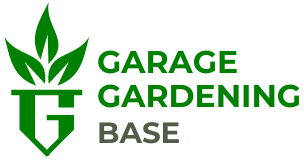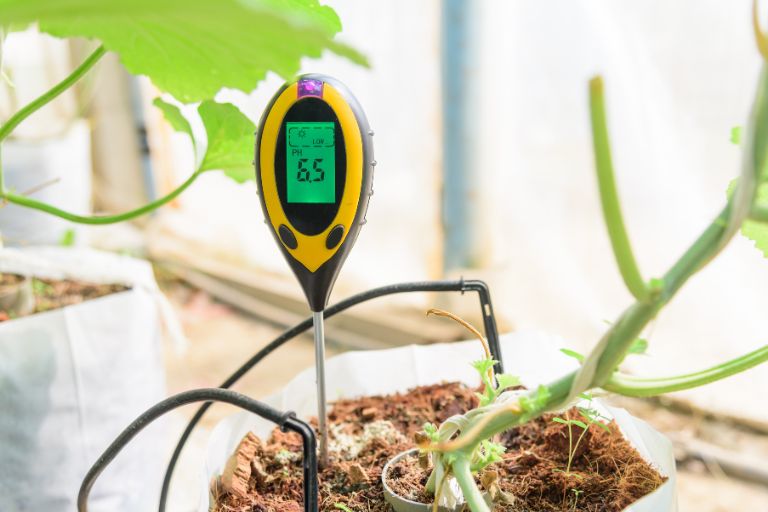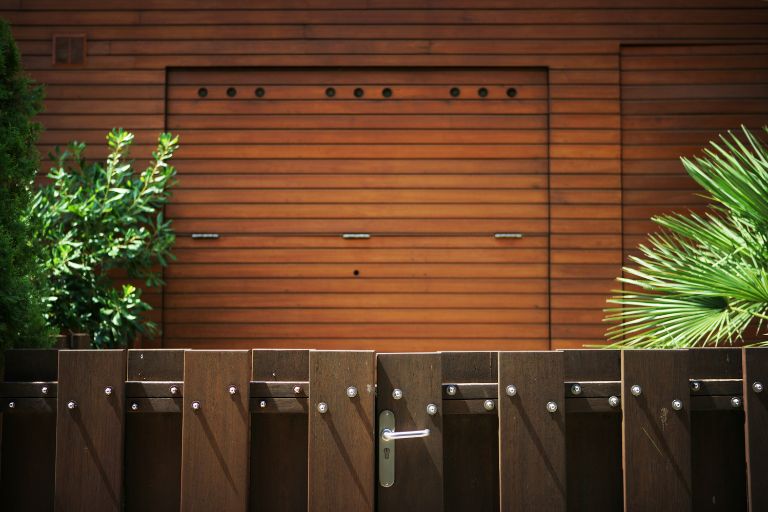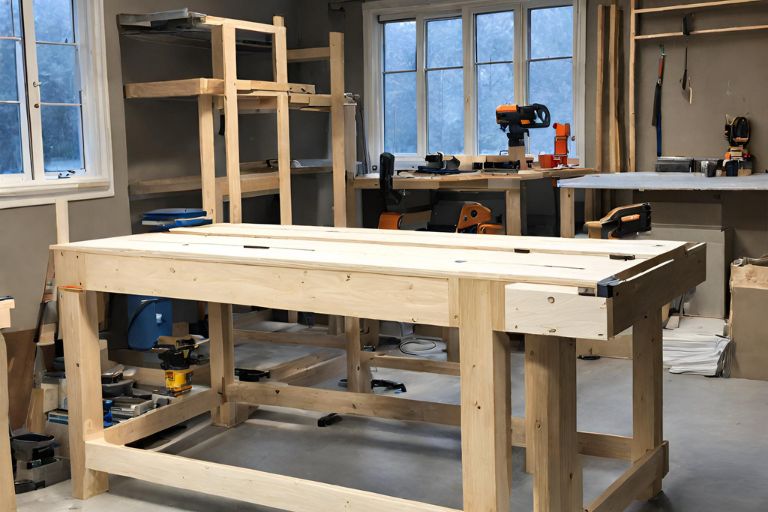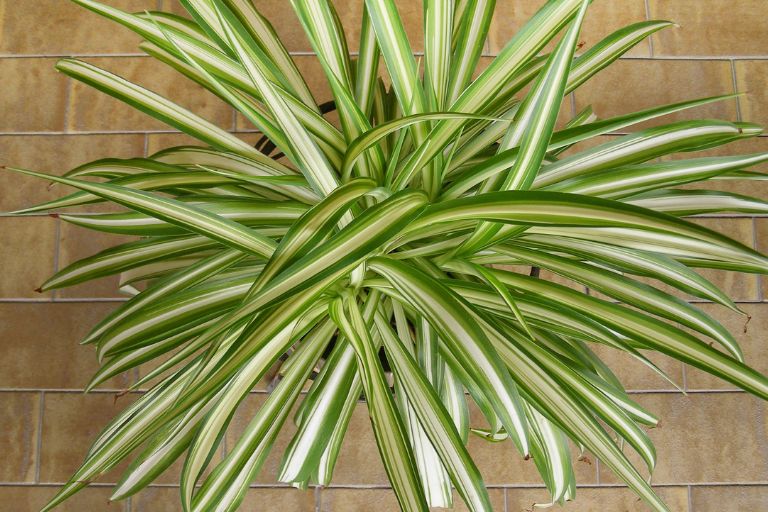Revolutionising Home Gardening: Exploring Aeroponic Gardening in the Garage
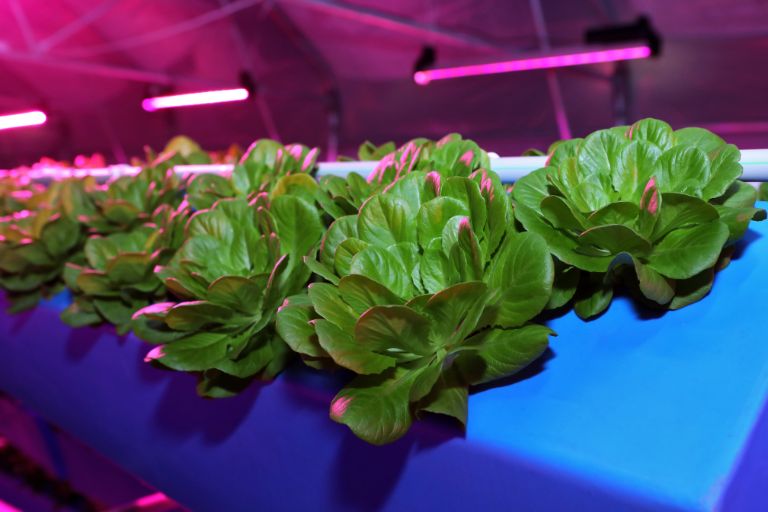
Modern gardening methods are undergoing a revolutionary transformation in response to the growing need for sustainability and self-sufficiency. Among these innovations, aeroponic gardening stands out for its ability to grow plants without soil, using a nutrient-rich mist to nourish roots suspended in the air. This technique offers unparalleled efficiency and versatility, making it a promising solution for urban dwellers facing space constraints.
As urbanisation continues and living spaces become smaller, traditional gardening methods are no longer feasible for many. However, aeroponic gardening offers an alternative that overcomes these limitations, allowing individuals to grow fresh produce within the confines of their homes. In this article, we explore the fusion of aeroponics and garage space, and reveal how this overlooked area can be transformed into a thriving garden.
Introduction to Aeroponic Gardening
Aeroponic gardening is a modern method of growing plants without soil, using a nutrient-rich mist to deliver essential nutrients directly to plant roots suspended in the air. Unlike traditional gardening methods that rely on soil as a medium for plant growth, aeroponics uses a special system to mist the roots with a nutrient solution at regular intervals, ensuring optimal nutrient uptake and hydration.
The principles of aeroponic gardening revolve around creating an environment where plants receive essential nutrients, water and oxygen directly to their roots, promoting rapid and efficient growth. The key components of aeroponic systems include a reservoir for nutrient solution, a pump to deliver the solution to misting nozzles, and a structure to support the plant roots in the air.
In aeroponic systems, plant roots are typically placed in specially designed containers or structures that allow them to dangle freely in the air. The nutrient solution is then delivered to the roots in the form of a fine mist, providing a constant supply of water and essential nutrients. This fogging process ensures that the roots remain moist and well oxygenated, facilitating optimal nutrient uptake and promoting vigorous plant growth.
Aeroponic gardening offers several advantages over traditional soil-based methods, including faster growth rates, higher yields and reduced water use. By delivering nutrients directly to the roots and allowing for better oxygenation, aeroponic systems can maximise plant growth while minimising resource consumption. In addition, aeroponic gardening is particularly suited to urban environments and indoor spaces where access to arable land may be limited.
Aeroponic gardening offers several advantages over traditional soil-based gardening methods, making it an attractive option for both home gardeners and commercial growers. These are some of the main benefits:
Reduced water use
– Aeroponic systems use water more efficiently than traditional soil-based gardening. In aeroponics, water is delivered directly to the plant roots in the form of a nutrient-rich mist, minimising water waste.
– Because the roots are suspended in air rather than submerged in soil, there is no risk of water run-off or evaporation, further conserving water resources.
– In addition, aeroponic systems often recirculate the nutrient solution, meaning that water is continuously reused within the system, resulting in even greater water efficiency.
Faster growth rates
– Plants grown in aeroponics typically have faster growth rates than those grown in soil. This is because aeroponic systems give plants direct access to oxygen, water and nutrients, allowing them to absorb these essential elements more efficiently.
– With nutrients delivered directly to the roots at regular intervals, plants can devote more energy to above-ground growth, resulting in healthier and more robust plants.
Minimal pest problems
– Aeroponic gardening significantly reduces the risk of pest infestation compared to traditional soil-based gardening. Without soil, aeroponic systems eliminate the habitat for many soil-borne pests and pathogens.
– In addition, because the roots are suspended in the air and not in contact with the soil, there is less chance of soil-borne pests such as nematodes and soil-borne diseases affecting the plants.
– Furthermore, aeroponic systems can be set up indoors or in controlled environments, further reducing the risk of pest infestation by excluding outdoor pests.
Space efficiency
– Aeroponic systems are highly space efficient and can be set up in a variety of locations, including indoor spaces such as garages, basements or even vertical farming structures.
– By utilising vertical space and eliminating the need for soil containers, aeroponic gardening allows for greater flexibility in space utilisation, making it suitable for urban environments where space is at a premium.
Transforming the Garage into a Garden
Using garage space for aeroponic gardening offers a unique opportunity to transform unused space into productive and sustainable growing environments. Read on to find out how this can work:
Space Optimisation
– Garages often offer ample space that can be repurposed for aeroponic gardening, especially in urban and suburban areas where outdoor space may be limited.
– By converting a portion of the garage into a gardening area, individuals can make the most of available space while keeping gardening activities protected from the elements.
Climate control
– Garages provide a controlled environment that can be optimised for aeroponic gardening. With proper insulation and ventilation, temperature and humidity levels can be regulated to create an ideal growing environment throughout the year.
– In regions with extreme weather conditions, garages offer protection from frost, excessive heat or heavy rainfall, allowing for consistent plant growth and harvests.
Privacy and security
– Gardening in a garage provides a level of privacy and security that may be lacking in outdoor garden spaces. This is particularly beneficial for urban gardeners concerned about theft, vandalism or nosy neighbours.
– With the garage acting as a shield, aeroponic gardeners can grow plants without worrying about unauthorised access or unwanted attention.
Gardening all year round
– One of the major advantages of using garage space for aeroponic gardening is the ability to garden year-round, regardless of outdoor weather conditions.
– With controlled lighting and environmental conditions, plants can thrive in the garage throughout the seasons, ensuring a continuous harvest and supply of fresh produce.
Accessibility and convenience
– Garages are usually easily accessible from the home, making it convenient for gardeners to tend to their plants without having to travel far.
– In addition, gardening in the garage eliminates the need to carry heavy pots or equipment back and forth from outdoor gardening areas, reducing physical strain and effort.
Customisation and adaptability
– Garage spaces can be customised and adapted to suit specific aeroponic gardening needs and preferences. Gardeners can install shelves, hanging racks or vertical growing systems to maximise space utilisation.
– With the flexibility to adjust lighting, irrigation and environmental controls, garage-based aeroponic gardens can accommodate a wide variety of plants, from leafy greens and herbs to flowering plants and fruiting vegetables.
Setting up an aeroponic garden in a garage is feasible and offers several advantages, but it requires careful planning and consideration of several factors to ensure success.
Space constraints
– Garages come in different sizes and the feasibility of setting up an aeroponic garden depends on the space available. Even small garages can accommodate vertical growing systems or compact aeroponic setups.
– Gardeners should assess the space available and plan the layout accordingly, maximising vertical space with shelves, racks or hanging systems to optimise the growing area.
Lighting
– Adequate lighting is essential for plant growth in an indoor aeroponic garden, as natural sunlight may be limited in a garage environment.
– Gardeners can use artificial grow lights, such as LED or fluorescent lights, to provide the spectrum of light needed for plant growth. Positioning lights at the correct distance and angle will ensure even coverage and prevent light burns or shadows.
Ventilation
– Proper ventilation is essential to maintain optimal airflow and prevent heat build-up in the garage, especially if it’s used for other purposes or lacks windows.
– Installing exhaust fans or vents will help remove excess heat, moisture and carbon dioxide from the grow room, promoting healthy plant growth and preventing mould or mildew problems.
Temperature control
– Garages can experience temperature fluctuations, especially in regions with extreme weather conditions, which can affect plant growth and health.
– Insulating and sealing gaps in the garage door and walls will help regulate temperatures and minimise heat loss or gain. The use of portable heaters or fans can also help maintain consistent temperatures within the desired range for plant growth.
Environmental monitoring
– Monitoring environmental factors such as temperature, humidity and CO2 levels is essential to ensure optimal growing conditions and to detect problems early.
– Growers can use digital thermometers, hygrometers and CO2 monitors to track environmental parameters and adjust conditions as needed to support plant growth and health.
Pest and disease management
– Despite being indoors, garage-based aeroponic gardens are not immune to pest and disease problems. Regular monitoring and preventative measures, such as maintaining cleanliness and using organic pest control methods, help to minimise the risks.
– Quarantining new plants, regularly checking for pests and practicing good hygiene can prevent pests and diseases from spreading throughout the garden.
Setting up an aeroponic garden in your garage requires careful planning and consideration of several factors to ensure success. The following are some tips and guidelines for designing and setting up your garage aeroponic garden:
Evaluate available space
Measure the available space in your garage and determine how much area you can dedicate to your aeroponic garden. Also consider vertical space and plan for shelving or hanging systems to maximise the growing area.
Choose the right aeroponic system
– Choose an aeroponic system that fits your space constraints and gardening goals. Options range from DIY setups to commercially available systems such as Tower Garden or AeroGarden.
– Consider factors such as the number of plants you want to grow, ease of maintenance and scalability of the system.
Provide adequate lighting
– Determine the lighting requirements of your plants and install appropriate grow lights if natural sunlight is not sufficient. LED grow lights are energy efficient and provide a full spectrum of light for optimal plant growth.
– Position lights at the correct distance and angle to ensure even coverage and to prevent light burn or shadowing.
Ensure proper ventilation
– Install exhaust fans or vents to ensure proper airflow and prevent heat build-up in the garage. Adequate ventilation helps regulate temperature and humidity levels to promote healthy plant growth.
– Consider adding intake fans or vents to bring in fresh air from outside and improve air circulation within the grow room.
Control temperature and humidity
– Insulate the garage walls and door to help regulate temperatures and minimise heat loss or gain. Use portable heaters or fans to maintain consistent temperatures within the desired range for plant growth.
– Monitor humidity levels and use a dehumidifier if necessary to prevent mould or mildew problems, especially in humid climates or during the winter months.
Choose suitable plants
– Choose plants that are well suited to aeroponic gardening and fit into the space available in your garage. Leafy greens, herbs and certain vegetables such as tomatoes and peppers are popular choices for aeroponic systems.
– Consider the nutritional needs, growth habits and space requirements of the plants you choose to ensure they will thrive in your aeroponic garden.
Maintain environmental monitoring
– Use digital thermometers, hygrometers and CO2 monitors to monitor environmental parameters in your garage-based aeroponic garden. Check regularly and adjust conditions as needed to support optimal plant growth and health.
– Keep a log of environmental data and observations to track changes over time and identify problems early.
Practice good hygiene
– Maintain cleanliness in your aeroponic system by regularly cleaning and sterilising components such as reservoirs, tubing and mist nozzles. This will help prevent the build-up of algae, bacteria and other pathogens.
– Practice good hygiene when handling plants to minimise the risk of contamination and the spread of pests or diseases. Quarantine new plants before introducing them to your garden to prevent the introduction of pests.
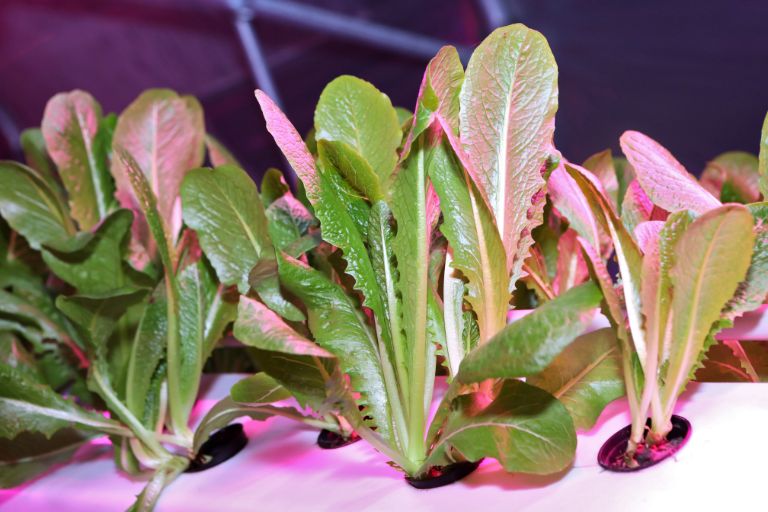
Benefits and Challenges
Using a garage for aeroponic gardening offers several advantages that make it an attractive option for urban and suburban gardeners. The following are some of the main benefits:
Garden all year round
– One of the main advantages of using a garage for aeroponic gardening is the ability to garden year-round, regardless of outdoor weather conditions.
– With controlled lighting, temperature and humidity levels, plants can thrive in the garage environment, allowing for continuous growth and harvests throughout the seasons.
Privacy
– Gardening in the garage provides a level of privacy that may be lacking in outdoor garden spaces.
– With the garage acting as a shield, aeroponic gardeners can grow plants away from prying eyes, providing a sense of privacy and security.
Protection from the elements
– Garages offer protection from external elements such as extreme temperatures, frost, hail or heavy rainfall, which can affect plant growth and health.
– By providing a sheltered environment, garages help to protect aeroponic gardens from adverse weather conditions, ensuring consistent and reliable harvests.
Accessibility
– Garages are usually easily accessible from the home, making it convenient for gardeners to tend to their plants without having to travel far.
– With the garage nearby, gardeners can check on their plants, adjust environmental conditions and perform maintenance tasks with ease and convenience.
Space utilisation
– Garages provide a versatile and underutilised space that can be repurposed for aeroponic gardening, especially in urban environments where outdoor space is limited.
– By converting a portion of the garage into a gardening area, individuals can make the most of available space and maximise vertical growing opportunities.
Security
– Gardening in the garage provides an added layer of security, protecting plants from theft, vandalism or damage caused by outdoor pests.
– Because the garage provides a controlled and enclosed environment, aeroponic gardeners can grow plants with peace of mind, knowing that their efforts are safe and secure.
While there are many benefits to using a garage for aeroponic gardening, there are also a number of challenges that need to be addressed. The following are some potential challenges and strategies for overcoming them:
Limited space
– Limited garage space can be a challenge when setting up an aeroponic garden, especially for larger systems or when multiple plants are desired.
– To overcome this challenge, maximise vertical space by using shelves, hanging racks or vertical growing systems. Choose compact aeroponic setups or modular systems that can be customised to efficiently fit the space available.
Adequate lighting
– Insufficient natural light in the garage may require supplemental lighting to ensure proper plant growth and development.
– Install full-spectrum LED grow lights to provide the necessary light spectrum for photosynthesis. Position lights at the correct spacing and angle to ensure even coverage and prevent light burns or shadows.
Manage humidity
– Garages can be prone to humidity fluctuations, especially in humid climates or during certain seasons.
– Use a dehumidifier to maintain optimal humidity levels in the garage and prevent excess moisture that can lead to mould or mildew problems. Monitor humidity levels regularly and adjust as necessary to ensure a healthy growing environment.
Temperature control
– Temperature fluctuations in the garage can affect plant growth and health, especially during extreme weather conditions.
– Insulate the garage walls and door to help regulate temperatures and minimise heat loss or gain. Use portable heaters or fans to maintain consistent temperatures within the desired range for plant growth.
Environmental monitoring
– Regularly monitor environmental factors such as temperature, humidity and CO2 levels to ensure optimum growing conditions.
– Use digital thermometers, hygrometers and CO2 monitors to track environmental parameters and make adjustments as necessary. Keep a log of environmental data and observations to identify problems early and address them promptly.
Pest and disease management
– Despite being indoors, garage-based aeroponic gardens are not immune to pest and disease problems.
– Practice good hygiene by regularly cleaning and sterilising aeroponic system components to prevent the build-up of algae, bacteria and other pathogens. Inspect plants regularly for signs of pests or disease and treat promptly with organic pest control methods if necessary.
To maximise the benefits of garage-based aeroponic gardening and overcome potential challenges, consider implementing the following strategies:
Efficient use of space
– Maximise vertical space by using shelving, hanging racks or vertical growing systems to fit more plants in a limited area.
– Choose compact aeroponic setups or modular systems that can be customised to efficiently fit the available space.
– Implement staggered planting schedules to ensure continuous harvests and make the most of available space throughout the year.
Optimum lighting
– Install full-spectrum LED grow lights to provide the necessary light spectrum for photosynthesis and promote healthy plant growth.
– Position lights at the correct spacing and angle to ensure even coverage and prevent light burn or shadowing.
– Use timers to maintain a consistent light cycle and ensure plants receive the right amount of light each day.
Environmental control
– Insulate garage walls and doors to help regulate temperatures and minimise heat loss or gain. Use weather stripping to seal gaps and prevent drafts.
– Use portable heaters or fans to maintain consistent temperatures within the desired range for plant growth, especially during extreme weather conditions.
– Install exhaust fans or vents to ensure proper airflow and prevent heat build-up, humidity and CO2 levels to maintain optimal growing conditions.
– Use a dehumidifier to maintain optimum humidity levels and prevent excess moisture that can lead to mould or mildew problems.
Environmental monitoring
– Regularly monitor environmental factors such as temperature, humidity, CO2 levels and pH levels to ensure optimal growing conditions.
– Use digital thermometers, hygrometers, CO2 monitors and pH meters to accurately track environmental parameters.
– Keep a log of environmental data and observations to identify problems early and make adjustments as needed to maintain optimal growing conditions.
Pest and disease management
– Practice good hygiene by regularly cleaning and sterilising aeroponic system components to prevent the build-up of algae, bacteria and other pathogens.
– Inspect plants regularly for signs of pests or disease and treat promptly using organic pest control methods if necessary.
– Use preventive measures such as quarantining new plants, using companion planting and crop rotation to minimise the risk of pests and diseases.
Tips for Getting Started
The following is some practical advice if you are interested in starting your own garage-based aeroponic garden:
Evaluate your space
Measure the available space in your garage and determine how much area you can dedicate to your aeroponic garden. Consider vertical space and plan for shelving or hanging systems to maximise the growing area.
Research aeroponic systems
Explore different types of aeroponic systems, from DIY setups to commercial kits. Consider factors such as the number of plants you want to grow, ease of maintenance and scalability of the system.
Choose suitable plants
Choose plants that are well suited to aeroponic gardening and fit into the space available in your garage. Leafy greens, herbs and certain vegetables such as tomatoes and peppers are popular choices for aeroponic systems.
Invest in lighting
Determine the lighting requirements of your plants and invest in high-quality grow lights if natural sunlight is not sufficient. LED grow lights are energy efficient and provide a full spectrum of light for optimal plant growth.
Install environmental controls
– Insulate the garage walls and door to regulate temperatures and minimise heat loss or gain. Use portable heaters or fans to maintain consistent temperatures within the desired range for plant growth.
– Install exhaust fans or vents to ensure proper airflow and prevent heat build-up. Use a dehumidifier to maintain optimum humidity levels and prevent excess moisture.
Purchase the necessary equipment
Gather all the necessary equipment for your aeroponic system, including reservoirs, pumps, tubing, misting nozzles and nutrient solutions. Make sure all components are compatible and of high quality.
Start small and expand gradually
Start with a small aeroponic system and gradually expand your garden as you gain experience and confidence. This will allow you to learn the basics of aeroponic gardening without getting overwhelmed.
Monitor and maintain regularly
– Regularly monitor environmental factors such as temperature, humidity, CO2 levels and pH levels to ensure optimal growing conditions. Keep a log of environmental data and observations to track changes over time.
– Maintain cleanliness in your aeroponic system by regularly cleaning and sterilising components to prevent the build-up of algae, bacteria and other pathogens.
Here’s a step-by-step guide to setting up a basic aeroponic system in your garage:
Choose suitable plants
– Research and select plants that thrive in aeroponic systems and fit your preferences and space constraints. Leafy greens such as lettuce, spinach and kale are excellent choices due to their rapid growth and high yields.
– Consider herbs such as basil, mint, coriander and parsley, which thrive in aeroponics and add flavour to your dishes.
– Vegetables such as tomatoes, peppers, cucumbers and strawberries can also be grown in aeroponic systems, but they may require larger containers and more support as they grow.
– Evaluate the lighting requirements, growth habits and nutritional needs of each plant to ensure they are compatible with your garage-based aeroponic system.
Choose the right equipment
Reservoir – Choose a food-grade plastic or hydroponic reservoir that is large enough to hold an adequate amount of nutrient solution for your plants. Consider the number of plants and their water requirements when sizing the reservoir.
The pump – Choose a submersible water pump with adjustable flow capabilities to ensure adequate water delivery to the mist nozzles. Choose a pump size that matches the volume of your reservoir and the number of nozzles you plan to use.
Fogging nozzles – Select high quality mist nozzles that produce a fine, even mist suitable for aeroponic gardening. Choose a nozzle size and spray pattern that provides sufficient coverage to reach all the plant roots in your system.
Tubing – Use durable, flexible tubing with a diameter that matches the fittings on your pump and mist nozzles. Choose food-grade tubing that will resist clogging and degradation from exposure to nutrient solution and UV light.
Timer – Invest in a reliable timer with customisable programming options to automate the misting cycle for your aeroponic system. Choose a timer with adjustable intervals to ensure consistent watering throughout the day based on the needs of your plants.
Grow lights – If natural sunlight is insufficient or unavailable in your garage, choose full-spectrum LED grow lights that mimic the spectrum of natural sunlight. Consider the wattage, colour temperature and footprint of the lights to ensure they meet the needs of your plants.
Set up the aeroponic system
– Choose a suitable location in your garage to set up your aeroponic system and make sure it has adequate lighting and ventilation. Consider installing reflective materials or white surfaces to maximise light penetration and distribution to your plants.
– Place the reservoir on a stable surface or stand, ensuring it is level and secure to prevent spillage or accidents. Fill the reservoir with clean, pH balanced water and add the appropriate amount of nutrient solution according to the manufacturer’s instructions.
– Install the submersible water pump in the reservoir and connect it to the misting nozzles using the flexible tubing. Position the mist nozzles over the plant containers or trays, ensuring they are evenly spaced and angled to provide even coverage of all plants.
– Hang or mount the LED Grow Lights above the plants at the recommended spacing and angle to ensure optimum light distribution and coverage. Use adjustable hangers or mounting hardware to position the lights at the correct height as your plants grow.
– Set the timer to automate the fogging cycle based on the needs of your plants and the environmental conditions in your greenhouse. Program the timer to run multiple mist cycles throughout the day, with intervals that keep your plants adequately hydrated without causing waterlogged roots or nutrient depletion.
Maintain optimal growing conditions
– Regularly monitor environmental factors such as temperature, humidity, CO2 levels and pH levels to ensure optimal growing conditions for your plants. Use digital thermometers, hygrometers, CO2 monitors and pH meters to accurately track these parameters.
– Adjust the temperature and humidity in your garage as needed to maintain a comfortable and stable environment for plant growth. Use portable heaters, fans, humidifiers or dehumidifiers to regulate environmental conditions and prevent stress or damage to your plants.
– Keep the nutrient solution well aerated and properly balanced to ensure your plants receive the nutrients they need for healthy growth. Regularly monitor and adjust the pH and EC (electrical conductivity) levels of the nutrient solution to maintain optimum nutrient uptake and plant health.
– Check your plants regularly for signs of pests or disease, such as yellowing leaves, wilting or discolouration. Use organic pest control methods such as neem oil, insecticidal soap or beneficial insects to control pest infestations without harming your plants or the environment.
– Clean and sterilise the components of your aeroponic system regularly to prevent the build-up of algae, bacteria and other pathogens that can affect plant health and system performance. Rinse the reservoir, tubing, mist nozzles and pump regularly with clean water and sanitise with a dilute bleach or hydrogen peroxide solution to remove any biofilm or organic matter.
Creating an aeroponic garden in your garage can be a rewarding and sustainable way to grow fresh produce all year round, regardless of outdoor conditions. By following the step-by-step instructions and practical advice provided, you can create a thriving indoor garden that maximises available space, optimises environmental conditions and provides a continuous supply of nutrient-rich food.
Aeroponic gardening offers numerous benefits, including efficient water use, faster growth rates, minimal pest problems and space-saving design, making it an attractive option for urban and suburban gardeners. In addition, using a garage for aeroponic gardening provides privacy, accessibility and protection from the elements, further enhancing the gardening experience.
Remember to start small and gradually expand your garden as you gain experience and confidence in aeroponic gardening. Remain proactive in monitoring environmental conditions, maintaining equipment and managing plant health to ensure successful results.
